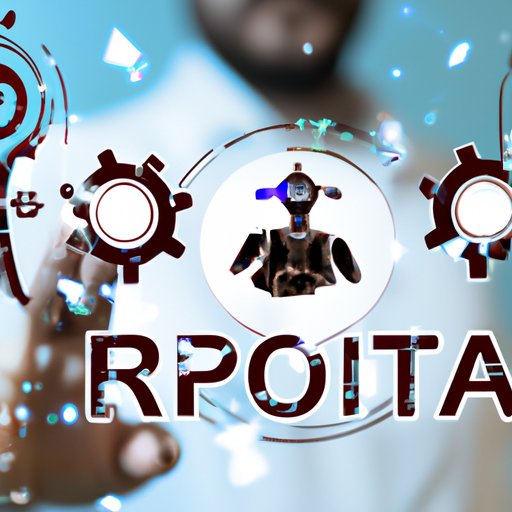Introduction: What is Robotic Process Automation (RPA) and How Does it Work?
Robotic Process Automation (RPA) is a form of automation technology that enables organizations to automate mundane tasks quickly and accurately. RPA helps to streamline business processes by eliminating manual data entry and validation, allowing employees to focus on more strategic work. In this article, we will explore how RPA works and its benefits, use cases, technical components, challenges, and future.
Definition of RPA
RPA is defined as “the use of software robots to automate mundane, repetitive tasks traditionally performed by humans in a digital environment” by Gartner, a leading research and advisory firm. These robotic processes are designed to mimic human activities, such as data entry, validation, and customer onboarding. By automating these processes, businesses can reduce operational costs, improve productivity, and enhance customer service.
Overview of How RPA Works
RPA works by using software robots to automate tedious, repetitive tasks. The software robots are programmed to perform certain tasks, such as data entry, validation, and customer onboarding. They can be programmed to follow specific rules and instructions, and they can be triggered by events or conditions in the environment. For example, if a customer submits an order, the software robot can be triggered to initiate the order processing workflow.
Benefits of RPA
RPA offers several key benefits for businesses, including increased efficiency and accuracy, cost savings, and improved customer service. By automating mundane tasks, businesses can save time and money while improving accuracy and customer satisfaction. Additionally, RPA can help reduce manual errors and increase productivity by freeing up employees’ time to focus on more strategic work.

Different Use Cases for RPA
RPA can be used in various ways to streamline business processes. Common use cases include automating mundane tasks, enhancing data entry and validation, and streamlining customer onboarding. For example, RPA can be used to automate data entry and validation processes, such as entering customer orders into a system or verifying customer information. It can also be used to streamline customer onboarding processes, such as creating customer accounts and gathering customer information.
Technical Components of RPA
RPA consists of three main technical components: software robots, process automation, and artificial intelligence (AI). Software robots are programmed to carry out specific tasks, such as data entry and validation. Process automation is used to create automated workflows that are triggered by events or conditions in the environment. Finally, AI is used to enable the software robots to learn from their experiences and make decisions based on their observations.

Challenges and Limitations of RPA
Although RPA can offer many benefits, there are some challenges and limitations to consider. Security concerns are one of the biggest challenges, as RPA systems can be vulnerable to cyberattacks. Additionally, scaling RPA systems can be difficult, as it requires significant time and resources. Finally, RPA requires skilled personnel to develop and maintain the software robots, so organizations may need to invest in training or hiring new personnel.

Impact of RPA on Businesses
The impact of RPA on businesses has been significant. By automating mundane tasks, businesses have seen improved productivity, reduced operational costs, and increased customer satisfaction. According to a study conducted by McKinsey & Company, “Organizations that have implemented RPA have reported cost savings of 20-30 percent, along with improved customer service and higher employee satisfaction.”
Future of RPA
The future of RPA looks promising, as it is expected to continue to evolve and become more powerful. Automation of more complex tasks is one of the most significant advancements that is expected to take place in the near future. Additionally, cloud-based solutions are becoming increasingly popular, as they allow for easier scalability and integration with other technologies such as AI and machine learning. Finally, RPA is expected to become more accessible and user-friendly, making it easier for businesses to adopt and implement.
Conclusion
Robotic process automation is a form of automation technology that enables organizations to automate mundane tasks quickly and accurately. RPA offers several key benefits, including increased efficiency and accuracy, cost savings, and improved customer service. Additionally, RPA consists of three main technical components: software robots, process automation, and artificial intelligence. While there are some challenges and limitations to consider, the impact of RPA on businesses has been significant. Finally, the future of RPA looks promising, as it is expected to continue to evolve and become more powerful.
(Note: Is this article not meeting your expectations? Do you have knowledge or insights to share? Unlock new opportunities and expand your reach by joining our authors team. Click Registration to join us and share your expertise with our readers.)
